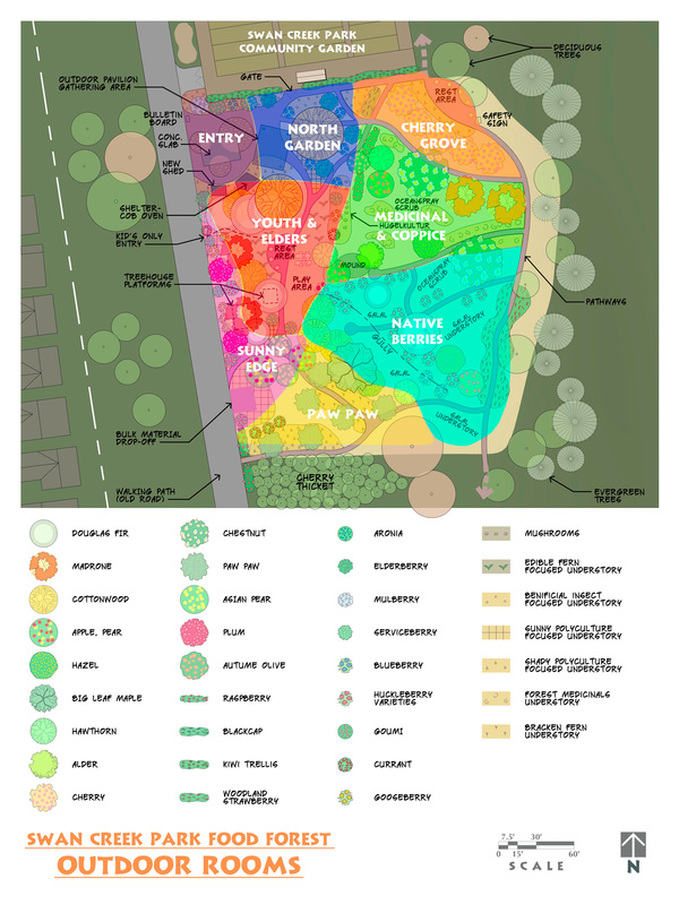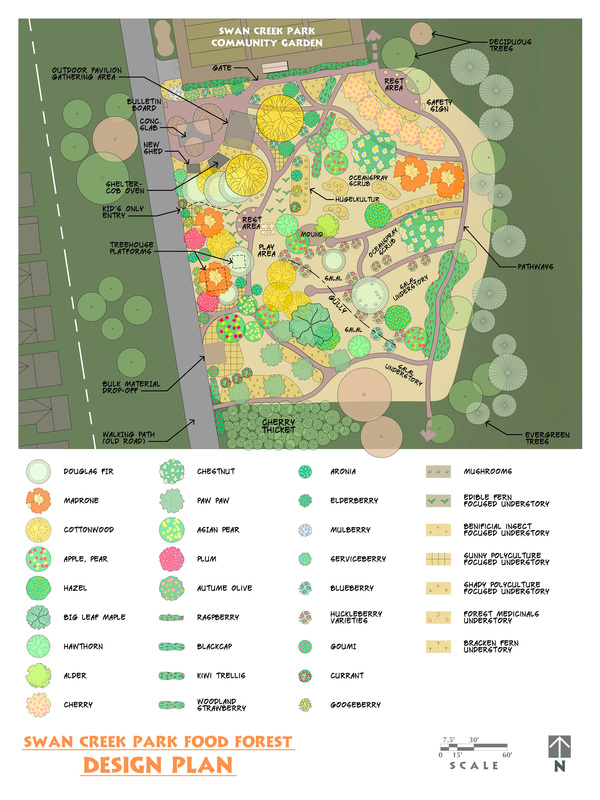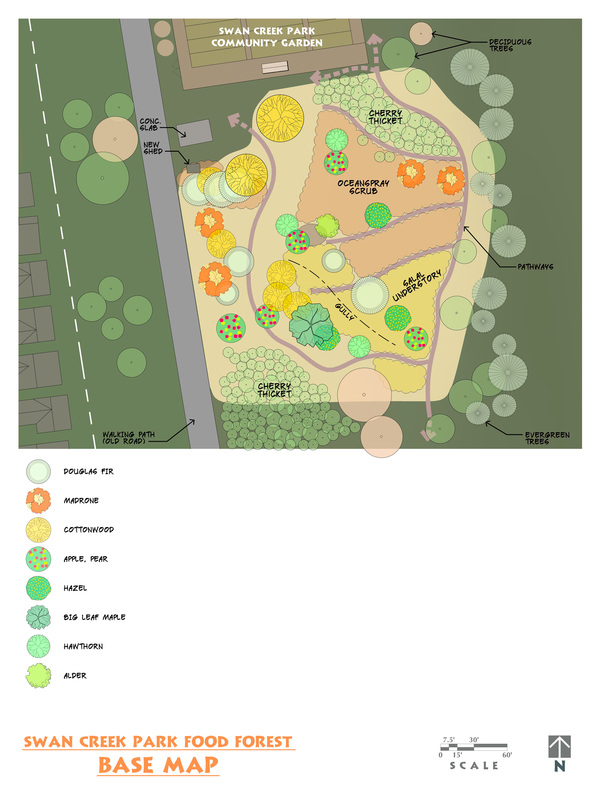design elements
Food Forests, or Edible Forest Gardens, are collections of food plants arranged in mutually supportive patterns similar to those found in natural forests.
A team of Permaculture Designers in 2013 gathered input from meetings with community members in order to create the designs below. Permaculture Designer Kelda Lorax took everyone's input and synthesized it into a drawing that Hank Gibson later digitized. There are many layers to the design as a whole, and here we have different visualizations of each part.
The first drawing illustrates the site's conceptual 'rooms,' or themed parts of the forest:
A team of Permaculture Designers in 2013 gathered input from meetings with community members in order to create the designs below. Permaculture Designer Kelda Lorax took everyone's input and synthesized it into a drawing that Hank Gibson later digitized. There are many layers to the design as a whole, and here we have different visualizations of each part.
The first drawing illustrates the site's conceptual 'rooms,' or themed parts of the forest:
Next, we have a map of all of the different plants:
And finally, a map of the trees!:
each plant has multiple purposes in the design:
- Many shrubs provide food for both wildlife and humans
- Aromatic herbs an provide food and medicine for wildlife and humans
- Many vegetables are or can act like perennials, growing vibrantly on the forest floor.
- Food and medicine plants can also cover the ground to protect soils and waters for generations to come
- Fungi improves soil, help plants, and can provide food and medicines



